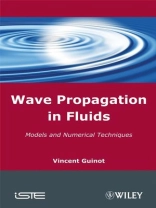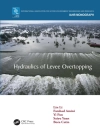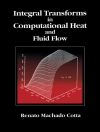This book presents the physical principles of wave propagation in fluid mechanics and hydraulics. The mathematical techniques that allow the behavior of the waves to be analyzed are presented, along with existing numerical methods for the simulation of wave propagation. Particular attention is paid to discontinuous flows, such as steep fronts and shock waves, and their mathematical treatment. A number of practical examples are taken from various areas fluid mechanics and hydraulics, such as contaminant transport, the motion of immiscible hydrocarbons in aquifers, river flow, pipe transients and gas dynamics. Finite difference methods and finite volume methods are analyzed and applied to practical situations, with particular attention being given to their advantages and disadvantages. Application exercises are given at the end of each chapter, enabling readers to test their understanding of the subject.
विषयसूची
Introduction.
Chapter 1. Scalar Hyperbolic Conservation Laws in One Dimension of Space.
1.1. Definitions.
1.2. Determination of the solution.
1.3. A linear law: the advection equation.
1.4. A convex law: the inviscid Burgers equation.
1.5. Another convex law: the kinematic wave for free-surface hydraulics.
1.6. A non-convex conservation law: the Buckley-Leverett equation.
1.7. Advection with adsorption/desorption.
1.8. Conclusions.
Chapter 2. Hyperbolic Systems of Conservation Laws in One Dimension of Space.
2.1. Definitions.
2.2. Determination of the solution.
2.3. Specific case: compressible flows.
2.4. A 2×2 linear system: the water hammer equations.
2.5. A nonlinear 2×2 system: the Saint Venant equations.
2.6. A nonlinear 3×3 system: the Euler equations.
2.7. Summary of Chapter 2.
Chapter 3. Weak Solutions and their Properties.
3.1. Appearance of discontinuous solutions.
3.2. Classification of waves.
3.3. Simple waves.
3.4. Weak solutions and their properties.
3.5. Summary.
Chapter 4. The Riemann Problem.
4.1. Definitions – solution properties.
4.2. Solution for scalar conservation laws.
4.3. Solution for hyperbolic systems of conservation laws.
4.4. Summary.
Chapter 5. Multidimensional Hyperbolic Systems.
5.1. Definitions.
5.2. Derivation from conservation principles.
5.3. Solution properties.
5.4. Application to two-dimensional free-surface flow.
5.5. Summary.
Chapter 6. Finite Difference Methods for Hyperbolic Systems.
6.1. Discretization of time and space.
6.2. The method of characteristics (MOC).
6.3. Upwind schemes for scalar laws.
6.4. The Preissmann scheme.
6.5. Centered schemes.
6.6. TVD schemes.
6.7. The flux splitting technique.
6.8. Conservative discretizations: Roe’s matrix.
6.9. Multidimensional problems.
6.10. Summary.
Chapter 7. Finite Volume Methods for Hyperbolic Systems.
7.1. Principle.
7.2. Godunov’s scheme.
7.3. Higher-order Godunov-type schemes.
7.4. Summary.
Appendix A. Linear Algebra.
A.1. Definitions.
A.2. Operations on matrices and vectors.
A.3. Differential operations using matrices and vectors.
A.4. Eigenvalues, eigenvectors.
A.4.1. Definitions.
A.4.2. Example.
Appendix B. Numerical Analysis.
B.1. Consistency.
B.2. Stability.
B.3. Convergence.
Appendix C. Approximate Riemann Solvers.
C.1. HLL and HLLC solvers.
C.2. Roe’s solver.
Appendix D. Summary of the Formulae.
References.
Index.
लेखक के बारे में
Vincent Guinot is professor of hydrodynamic modeling at the University of Montpellier, France. He teaches fluid mechanics, hydraulics, numerical methods and hydrodynamic modeling.












